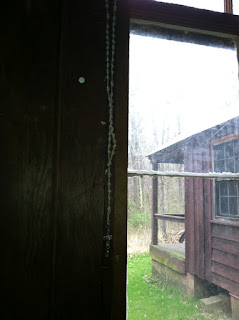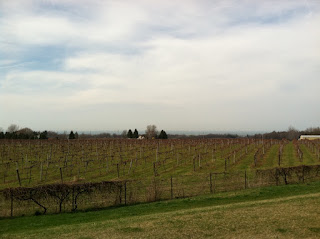This strange little body of water is the isolated "Upper Lake" at Raccoon Creek State Park. The main body of water in the park, Raccoon Lake, is a little over 100 acres with a nice beach...if you're into lake beaches, which I am because they're shark-free. The Upper Lake, however, is small and set off in a part of the park that most people never discover. I got there by following Nichol Road to the Wetlands Trail, which follows a swampy stream to the lake.
Beaver dams create deep pools along the Wetlands Trail, which is an appropriately named path. The stream valley is springing to life with green grass, buds, and little incipient leaves. I came across some wood ducks and wild geese, too. The geese had their long necks drawn down low, in a defensive posture, as they sat on their waterside nests.
I used a map of the park to patch together a hiking loop, using trails and roads. It was surprising to discover about six occupied campsites in the "year round" camping area, all tents. Who in the hell would go tent camping in this kind of weather? Two very rough-looking teenagers--one as fat as Tweedle-Dum--glared at me on the roadway near the camps. I greeted them, and they looked at me menacingly but made no reply. One of them walked toward me a little. I was feeling threatened but pretended to be calm; I allowed my hand to slip off the top of my walking stick to reveal that I've sharpened the tip of the stick into a pike. I actually like to carry a sharpened walking stick because of all the damned dogs you meet on some trails. The kid saw me wielding a sharp stick, gave me a crazy smile, and kept walking. It was very unsettling.

























